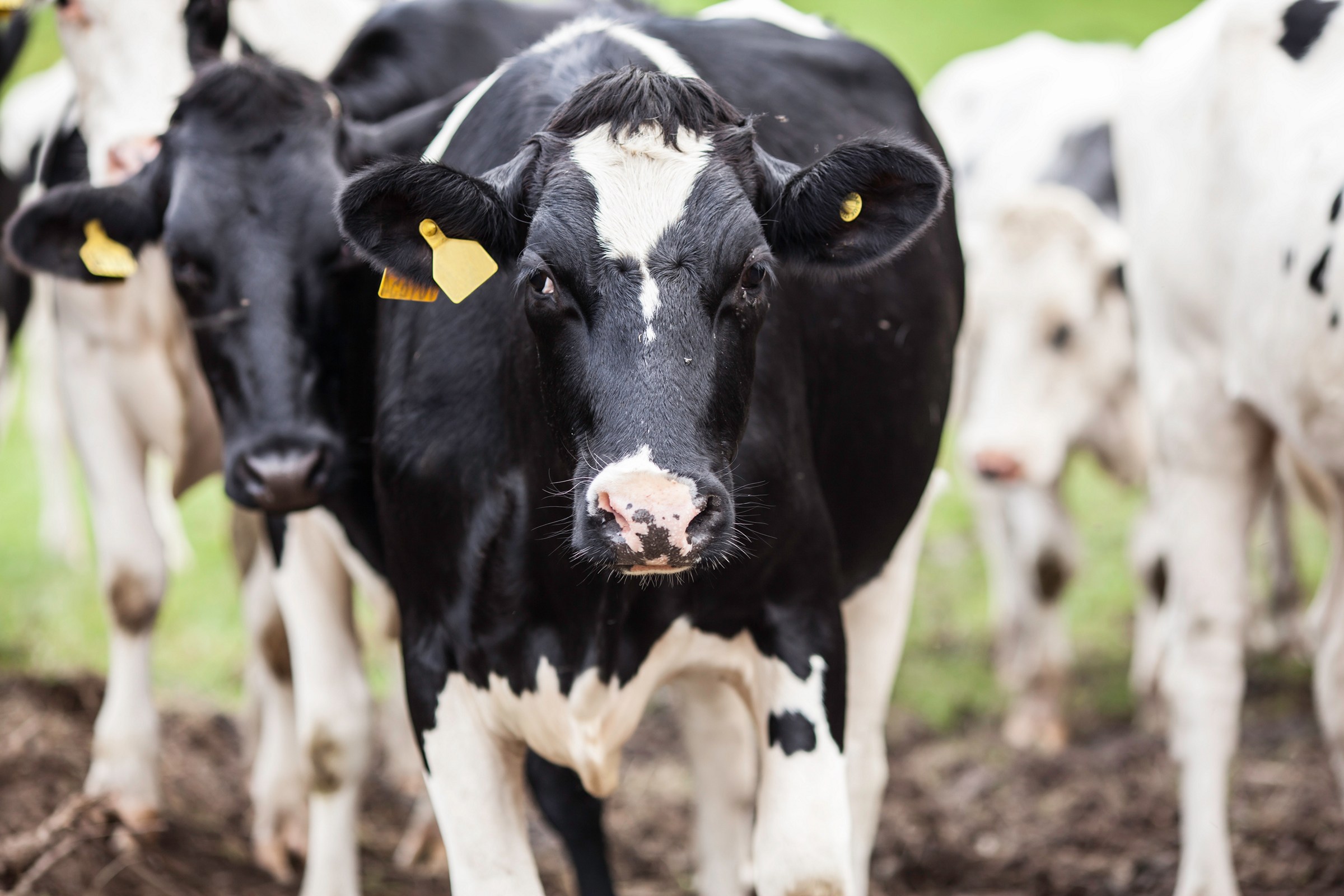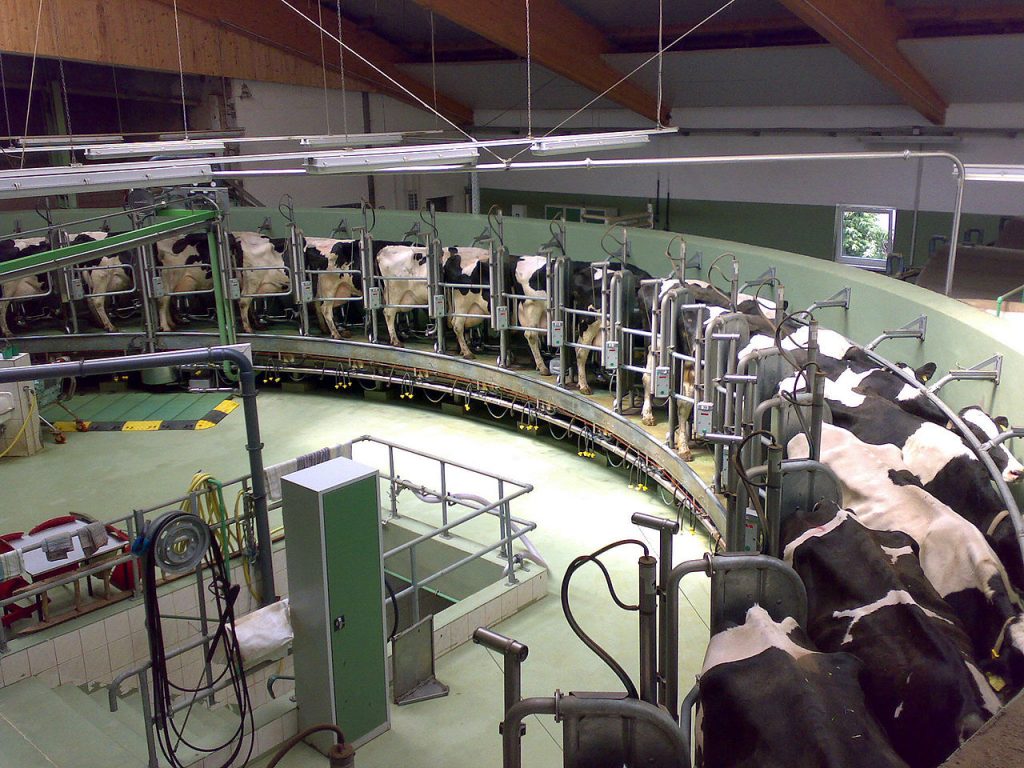The sky was a deep blue, the air was warm and it was a beautiful morning to be on a dairy farm in Chippewa Falls, Wis.
And then, Mandy Nunes began to cry. Mandy, who runs Scientific Holsteins with her husband Matt, was sharing how her family had milked cows for five generations and how Matt’s family had also milked cows for five generations.
She stopped talking, put her hand to her mouth and turned away. A minute or two later, Mandy had recovered and she continued talking about their farm and the financial struggles of dairy farmers in Wisconsin.
Thousands of small-scale dairy farmers in the United States are going through an emotional and trying time. Milk prices have been low for nearly four years and producers are losing hope. From January of 2016 until September 2018, more than 1,400 dairy farmers in Wisconsin sold their herds. As of last count, there were 8,372 dairy herds in the state, down from 13,000 in 2010.
“It’s been a really depressing time for farmers,’’ said Danielle Endvick, communications director with the Wisconsin Farmers Union in Chippewa Falls. “I think we’re really getting close to losing two (dairy) farms per day.”
Disappearance of Small Dairies
Enjoying our insights?
Subscribe to our newsletter to keep up with the latest industry trends and developments.
Stay InformedAround Chippewa Falls, the disappearance of small dairies is hard to miss.
“Within a 10 to 15-mile radius seven farms have gone out in the last two months,” said Vivian Thompson, who milks 100 cows in Cadott, Wis.
Dairy farmers have been leaving the business for decades, but what’s happening right now feels different, Thompson said. For decades, dairy farmers were willing to endure the ups and downs of milk prices. Nowadays, producers are doubtful that decent prices and profitability will ever return.
They also doubt that small scale dairies, with 75 to 150 cows, will be around in five or 10 years.
Dairy Industry Going Vertical
Adam Seibel, who runs an organic dairy in Bloomer, Wis. north of Chippewa Falls, is convinced that the small farms are finished. He thinks the dairy industry will become vertically integrated and dairy processors will control on-farm production. Or they’ll rely on a handful of massive dairies, with herds of 3,000, 5,000 or larger.
The Nunes’ both grew up on dairy farms in California, where immigrants from Portugal and the Netherlands operate most dairies. Matt’s family is from the Azores, a chain of islands in the Atlantic. Mandy’s ancestors milked cows in Holland and her parents still operate a dairy in Oregon.
After working in the dairy industry in Michigan and other states, the Nunes moved to Chippewa Falls in 2003 to start their own dairy and a registered Holstein business.
Their farm is only 11 acres. The Nunes buy feed for the 130 cows that they milk and the remainder of their herd. Their four girls spent a large part of their childhood on the farm. They are now adults and Alexa, the oldest, lives in California. The other three are in Minnesota. One is married and the two youngest are at the University of Minnesota, studying agriculture and communications.
It’s uncertain if any of their daughters will take over the dairy and maintain the family tradition of milking cows. However, right now, the Nunes have bigger things to worry about.
Robotic Milkers & Holstein Genetics
A few years ago they installed two robotic milkers, replacing a tie-stall barn. They thought it was the right time to adopt new technology because of their age (early 50s) and a shortage of labor in the area. The decision was likely a good one but the timing was bad.
“We moved to this barn (with milking robots) and we have a tremendous amount (of debt). Then, the dairy economy tanks,” Matt said. “We’re not profitable.”
U.S. Department of Agriculture data shows that milk prices were $20 per hundredweight (cwt.) or higher from 2011 to 2014 in Wisconsin. From 2015 to 2017 average prices were $16 to $17 per cwt.
For most small producers, it costs $16 to $20 per cwt. to produce milk, which means they’re making tiny profits or losing money.
Cutting Cost
Matt and Mandy are doing what they can to cut costs and improve revenues to pay down their debt. As registered breeders, the Nunes make money selling Holstein genetics. But it’s hard to get decent prices for quality genetics when dairy producers are losing money and thinking of quitting.
Cull cows are also a source of income but prices are horrific.
“We sell cull cows for the same money we did 35 years ago,” Matt said. “Right now, everything is tanked.”
Like the Nunes, Vivian Thompson was born and bred outside of Wisconsin. Vivian grew up on a dairy farm in Kentucky and met her husband Steve in South Carolina. They had a farm in South Carolina but a dam project and the related flooding affected their property. Because Steve grew up in the southern part of the state, they decided to relocate to Wisconsin.
They found a farm near Cadott, a town with an unusual claim to fame.
A large sign in Cadott says the town is half way between the equator and the North Pole. The actual latitude of equal distance is about three miles north of town, almost exactly where Vivian and Steve have their farm.
The Thompson’s milk 100 Holstein cows and Vivian is a director with the Dairy Farmers of Wisconsin, an organization that promotes dairy production and consumption.
Exodus of Dairy Farmers in Wisconsin
Through conversations with fellow producers she’s learned that the exodus of dairy farmers in Wisconsin is more complex than low milk prices. Many producers are leaving because they’re feeling exhausted.
“You’re wrecking your body. There’s 2 percent of us feeding 98 percent and we’re just getting tired of it,” she said while walking across the farm toward a group of Holstein calves.
“It’s a burnout. You are feeding a lot of people and it’s not appreciated. It seems like everybody is against it. After a while you say, feed yourself.’’
Grassland Dairy Products, a processor in Greenwood, Wis., canceled production contracts with about 70 dairy farmers in the state and in Minnesota. Grassland blamed Canada, saying its customers north of the border were no longer buying ultra-filtered milk from the U.S. because of Class 7, a new pricing policy for milk protein concentrates in Canada.
Milk Oversupply
The actual reason for weak milk prices in the U.S. is oversupply, industry analysts said. Dairy farmers in states like Michigan produce too much milk and truck the excess to Wisconsin cheese plants, undercutting local prices.
Mandy and Matt Nunes voted for Trump. Nonetheless, blaming Canada for low milk prices is absurd, they said.
“I don’t think it has anything to do with Canada,” Matt said. “You can have a 2-percent (milk) surplus in the United States and the price goes down 30 percent, just because there’s a surplus.”
If more Wisconsin cheese is consumed in other states and other countries, it should boost regional demand for milk, Vivian said. The logic seems reasonable and cheese sales could jump by 10, 15 or 20 percent, over the next five to 10 years.
But what are small-scale dairy farmers supposed to do in the meantime? Vivian wasn’t sure and she’s not alone.
(from The Western Producer)























